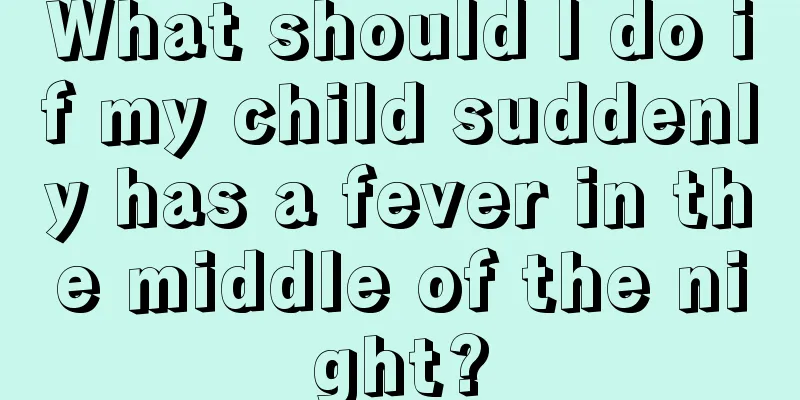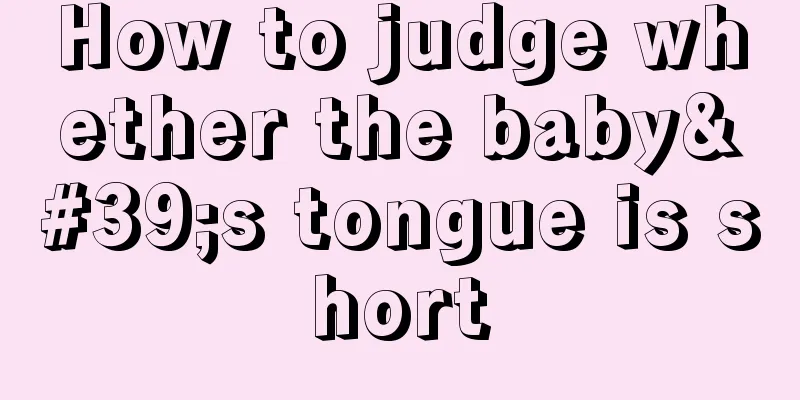What should I do if my child suddenly has a fever in the middle of the night?

|
Now that it is autumn, the temperature difference between day and night is very large, so autumn has also become the peak season for illness. It is relatively easy to deal with illnesses among adults and teenagers; the most difficult to deal with are children at home. Children's resistance is not as good as that of adults. Moreover, they are active and sweat easily, so they get sick very quickly. What should you do if your child suddenly has a fever in the middle of the night? What preparations do parents need to make in their daily lives? The parent editor will explain it to you here. The regulated increase in body temperature (more than 0.5°C) caused by the upward shift of the body temperature set point due to the action of pyrogens is also called fever. Normal body temperature is slightly different for each person and is affected by many factors (time of day, season, environment, menstruation, etc.). Therefore, to determine whether you have a fever, it is best to compare your body temperature with your usual body temperature under the same conditions. If you do not know your original body temperature, an axillary temperature (tested for 10 minutes) exceeding 37.2℃ can be considered a fever. There are many causes of fever, the most common of which is infection (including various bacterial infections, viral infections, mycoplasma infections, etc.), followed by connective tissue diseases (i.e. collagen diseases), malignant tumors, etc. Fever can be beneficial or harmful to the human body. When a fever occurs, the body's immune function is significantly enhanced, which is beneficial to eliminating pathogens and promoting recovery from the disease. Fever is also a sign of illness. Therefore, when the body temperature is not too high, you can reduce the discomfort caused by fever by drinking more water. Antibiotics (such as penicillin) are not necessary for fevers caused by non-bacterial infections. Warm glucose water can have a diuretic and cooling effect. When the body temperature does not exceed 38.5°, try to use physical methods to control the body temperature. However, if the body temperature exceeds 40℃ (over 39℃ in children), it may cause dizziness, convulsions, shock, and even serious sequelae, so you should seek medical attention promptly. If symptoms such as convulsions occur, sedatives should be taken as prescribed by the doctor (especially children). Children are the apple of their parents’ eyes. If something goes wrong, parents will be nervous for a long time. If they are not prepared, how can parents protect their children? Therefore, the editor still recommends that parents learn some basic emergency response methods so that they can deal with emergencies calmly. At the same time, you should pay more attention to keeping your children warm and adding more clothes. |
<<: How to treat children’s allergic cough with traditional Chinese medicine?
>>: How to make children's skin white?
Recommend
How to deal with children's separation anxiety
Children's separation anxiety is a condition ...
How to determine if a baby has phlegm in his throat?
People often have phlegm in their throats, which ...
What are the benefits of baby sleep?
After the baby is born, we often find that the ba...
Reasons why children sweat while sleeping
In fact, parents will find that some children oft...
What are the antidiarrheal medicines for children?
The physical qualities of children in their early...
Children's nutritious meals
The nutritional meals of babies are of concern to...
Can children take a hot spring bath?
In the cold winter, it is the best time to soak i...
What is the cause of red pimples all over the child's body?
We all know that babies' skin is particularly...
What should I do if my child's bone age is too high?
In modern society, due to many reasons, some chil...
What to do if your baby has loose yellow stools
For children, their gastrointestinal protection a...
What to use to wipe the face of a two-month-old baby
Although babies' skin is relatively smooth an...
What to do if your one-year-old baby cries a lot
Many babies cry when they are young, but generall...
Symptoms of anal fissure in babies
When a baby becomes ill, the people who worry the...
How to treat cerebral palsy in children?
Many children suffer from cerebral palsy, which s...
What should I do if my baby has diarrhea and fever?
Some babies have diarrhea or even fever, so patie...









